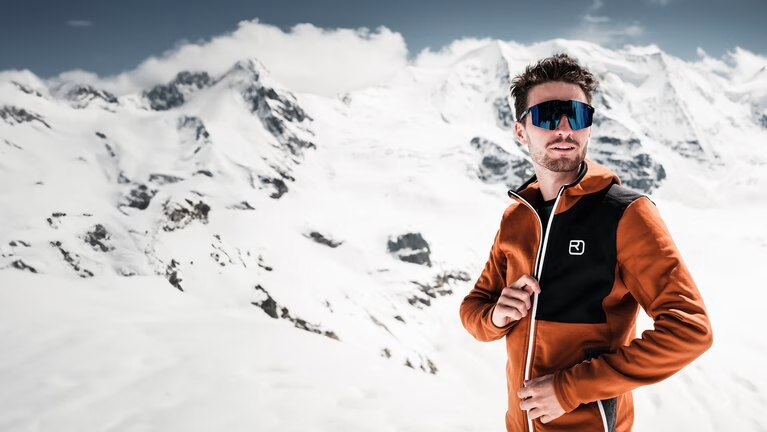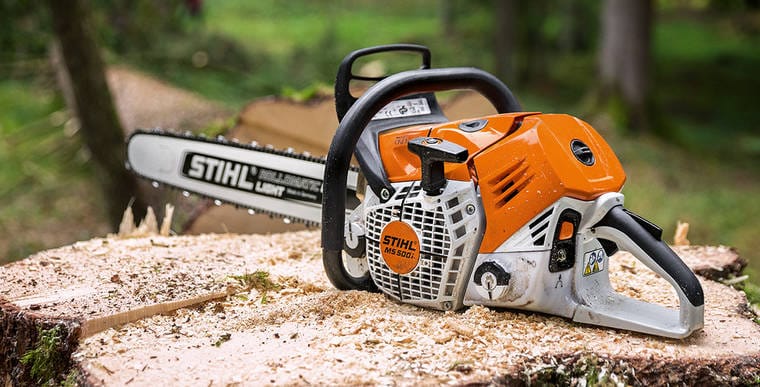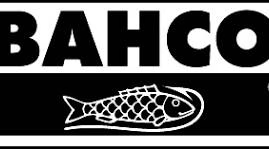Cut-Resistant Clothing Guide (2026): It’s not just a “Suit”, It’s your Lifesaver.

When working with a chainsaw, cut-resistant clothing (PPE) is not optional: it is the only barrier between a chain spinning at 20 meters per second and your leg. The choice should not be based solely on price, but on understanding the Protection Classes, the type of work you do, and, often underestimated, the comfort. An uncomfortable pair of trousers is dangerous because it tires you out faster and restricts movement.
In Castione, at our store and workshop Lucacastelli.com, we see professionals and private customers every day. We see equipment after months in the woods and hear stories of those who, thanks to certified trousers (perhaps a high-end Pfanner or STIHL), returned home with just a scare and trousers to discard, instead of ending up in the hospital.
This guide is born from our field experience to help you navigate regulations and choose the right PPE for your safety.
The “Heart” of the Matter: How Does Cut-Resistance Work?
Many think the fabric is “hard” like iron. It’s not. Cut-resistant clothing works through layers of long, strong fibers (like Kevlar® or proprietary technical yarns) woven between the two outer fabric layers.
What happens if the chain touches the trousers? The chain cuts the outer fabric, but the teeth immediately catch these inner fibers. The fibers are “pulled” out and wrap around the chainsaw sprocket in milliseconds, mechanically stopping the chain’s rotation.
Experience teaches: Once trousers have “worked” (been cut), the fibers are compromised. They must be replaced immediately. Never attempt to sew a deep cut on PPE.
Protection Classes: What Speed Do You Need?
The EN 381 standard (now transitioning to EN ISO 11393) classifies clothing based on the chain speed it can stop. Choosing the wrong class means not being protected.
Here is a summary table for guidance:
| Cut-Resistant Class | Max Chain Speed (Test) | Typical Recommended Use |
| Class 1 | 20 m/s (meters per second) | The most common standard. Ideal for most professional forestry work and private use with standard chainsaws. |
| Class 2 | 24 m/s | For professionals using more powerful chainsaws or in higher-risk situations. |
| Class 3 | 28 m/s | Less common, for extreme situations or very high-power chainsaws. Often the trousers are heavier and stiffer. |
Attention: Check your chainsaw’s maximum speed in the manual. The PPE must be of equal or higher class.
Design A, B, or C: Where Are You Protected?
Besides speed, it matters where the protection is located.
- Design A (The most common): The protection covers the front of both legs (at 180°), plus 5 cm on the inner and outer side of the left leg, and on the inner side of the right. It is the standard for classic forestry work.
- Design C (Full Protection): The protection wraps around the leg at 360°. It is mandatory for those working on aerial platforms, for tree climbers, or in situations where the risk of hitting the back of the leg is high. They are generally warmer and heavier.
The “Experience” Factor: Why Comfort is Safety
This is where theory meets the reality of the woods. A Class 1 pair of trousers costing €80 and a Class 1 pair costing €300 (like a top-of-the-line Pfanner Gladiator or STIHL Advance) both protect at 20 m/s on paper.
But after 6 hours of work under the sun on a slope, the difference is vast.
Why invest in high-quality technical clothing?
- Weight and Flexibility: Modern materials are lighter and stretchable. Moving nimbly through the underbrush means tripping less.
- Breathability: If you’re soaked in sweat, you tire faster. A tired operator makes mistakes. High-end trousers have vents and fabrics that manage moisture.
- Durability: Outer fabrics resistant to thorns and abrasions (like Cordura® or Gladiator® fabric) make the trousers last years, not months.
Frequently Asked Questions (FAQ) in Store
Can I wash cut-resistant trousers? Yes, and you must do it. Dirt, resin, and chain oil can “glue” the protective fibers, reducing their effectiveness. Always follow the label: usually wash at 40°C, no strong spin cycle, and absolutely no fabric softener (it damages technical fibers).
Do cut-resistant clothes have an expiration date? Even if they are never cut, yes. Over time, washing and UV exposure degrade the protective fibers. For intensive professional use, replacement is recommended every 12-18 months. For occasional use, they may last longer, but always check that the fabric is not worn out.
Do I also need to wear a cut-resistant jacket? It depends on the job. For standard ground work, often only trousers, gloves, helmet, and boots are used. The cut-resistant jacket is essential (and often mandatory) for those working in tree climbing or on a basket, where the risk of contact with the upper body is higher.
Conclusion: Do Not Skimp on Your Skin
Choosing cut-resistant clothing is an investment in your life. There is no “best” overall, only what suits your chainsaw and your work.
Our advice? If you use it for work, invest in comfort. Safety should not be a torture.
Do you have doubts about the right size or class for you? Do not risk a blind online purchase. Visit us in Castione: our team of experts will help you find the perfect PPE, let you try it on, and explain how to keep it efficient.














































































